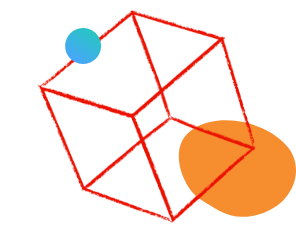Segments with a visitor container and breakdown by day dimension
![]()
- Mark as New
- Follow
- Mute
- Subscribe to RSS Feed
- Permalink
- Report
I created a segment of users who had credit application clicks using a visitor container. I used the month of April as the panel date range. And there're about 4 million users (unique visitor). When I added a day dimension there're about 160K unique visitor each day. What does the 160K mean? Active unique visitor in each day who had made credit application in the month of April? Because if I switch the segment container to visit level, the total is still 4 million users (unique visitor), but the daily visitor is much lower about 80K.
If I want to build a dashboard for the IT team to improve the engagement of credit applications, which segment container is better? I feel like the visit level contain provides better information on the day level. Is that right?
Solved! Go to Solution.

- Mark as New
- Follow
- Mute
- Subscribe to RSS Feed
- Permalink
- Report
Just to add to this fine answer, when you create a segment at visitor level.. this is lifetime of the visitor (did this user ever do this action.... when you pull that into your report, it will limit the data to the "users that ever performed that action" that came to the site during your time frame.
Visit is definitely more focused, cause they need to have performed the action within the time frame...
In many cases, I still prefer to use "hit" level in a lot of my segments... if I pair this with the UV metric, I still get the data I need (UVs who did X) but then if I want to get the count of actions (I don't get all the PVs in the entire visit that need to be filtered out)

- Mark as New
- Follow
- Mute
- Subscribe to RSS Feed
- Permalink
- Report
When you use 'visitor' as the container, the table will match any visitor who had credit application clicks regardless of when that happened. It means there are 160K visitors on a particular date visiting your site and they had credit application clicks at any point in time.
When using 'visit' as the container, it limits the credit application clicks to the corresponding visit. So the 80K means there are 80K visitors visiting your site and had credit application clicks on that day as well.

- Mark as New
- Follow
- Mute
- Subscribe to RSS Feed
- Permalink
- Report
Just to add to this fine answer, when you create a segment at visitor level.. this is lifetime of the visitor (did this user ever do this action.... when you pull that into your report, it will limit the data to the "users that ever performed that action" that came to the site during your time frame.
Visit is definitely more focused, cause they need to have performed the action within the time frame...
In many cases, I still prefer to use "hit" level in a lot of my segments... if I pair this with the UV metric, I still get the data I need (UVs who did X) but then if I want to get the count of actions (I don't get all the PVs in the entire visit that need to be filtered out)
![]()
- Mark as New
- Follow
- Mute
- Subscribe to RSS Feed
- Permalink
- Report
Thank you for replying.
If a segment is defined at visitor level, it still bounded by the calendar correct? If the calendar is selected as April, it only chose visitors who had credit applications in April but not the whole history.
Views
Replies
Total Likes

- Mark as New
- Follow
- Mute
- Subscribe to RSS Feed
- Permalink
- Report
No.... the problem is the order of operation...
The Segment is done first "unique visitors that did X"
The the calendar selection shows the users that were in your site in that month / range (but the segment action would be from all time).
So let's say you created a segment:
Unique Visitors that click on Button X
This would be based on all time "users who ever clicked on X", then your report looking at April, would show the users from that group that came to your site in April.
If you need to look at "Unique Visitors that click on Button X Last Month" you would need to add a "last month" range into the segment, but you also need to note to users that the segment is locked to a specific time frame (can be rolling like "last month", but would be locked into a specific rolling range). Changing your report to This Year, the segment would still be "Last Month"
- Mark as New
- Follow
- Mute
- Subscribe to RSS Feed
- Permalink
- Report
Does this mean that I cannot use a visitor segment to determine if someone has completed a visit-level task over the course of a certain time period?
For example if I want to know the number of visitors who placed 10 orders (across multiple visits) in 2022 I would make a visitor segment that includes order = 10 and date range = 2022. Would this actually be counting people who visited in 2022, but may have placed those 10 orders in 2021?
I might be overthinking it, but just wanted to make sure. Thanks so much!
Best,
Mike
Views
Replies
Total Likes

- Mark as New
- Follow
- Mute
- Subscribe to RSS Feed
- Permalink
- Report
@msappenfield you just have to be careful in creating your segments...
Using your example:
A visitor segment that includes order = 10 and date range = 2022
You have created a date specificity inside your segment, that will restrict those 10 orders to happen within 2022....
The original post was about creating a segment:
A visitor segment that includes order = 10
and simply using the report range to define the date...
But order = 10 could (and should be for all time).... then like you suggested apply a 2022 year range to limit the segment specifically to last year)
However, it looks like Adobe has changed the logic.... the Panel Date Range is providing definition... but that's NOT good.. now I can't create segments to look for Visitors that have ever signed up for a newsletter, or ever made a purchase...
I suppose I can do the opposite and create a full look-back range...
But this shift could fundamentally break existing reports for a lot of people who expect Visitor segments to be "All Time" by default....
- Mark as New
- Follow
- Mute
- Subscribe to RSS Feed
- Permalink
- Report
- Mark as New
- Follow
- Mute
- Subscribe to RSS Feed
- Permalink
- Report
Hi @Jennifer_Dungan ,
Can you please elaborate the statement " it looks like Adobe has changed the logic.... the Panel Date Range is providing definition... " ? Is it related to "Make date ranges components relative to panel calendar"?
As per my understanding if I have a Visitor level segment checking orders >10, all the visitor's lifetime orders by user will be counted as part of this segment not only the orders done in the reporting period. Has this logic changed now?
If you have an Adobe document handy that has an explanation for this update and you can share it , that would be great.
Thanks,
Rishabh

- Mark as New
- Follow
- Mute
- Subscribe to RSS Feed
- Permalink
- Report
As per my understanding if I have a Visitor level segment checking orders >10, all the visitor's lifetime orders by user will be counted as part of this segment not only the orders done in the reporting period
That is how it worked until recently!
I discovered a few weeks ago (and am still working with Adobe to understand what happened).. but right now, at this moment.... all Visitor Level segments are bound by the panel date!
So your "orders >10" is now more than 10 orders within the reporting period
😞
- Mark as New
- Follow
- Mute
- Subscribe to RSS Feed
- Permalink
- Report
I see.. thanks for the response.. it was helpful 🙂 Please let us know about the change once you receive update from Adobe.
Thanks,
Rishabh
- Mark as New
- Follow
- Mute
- Subscribe to RSS Feed
- Permalink
- Report
Thank you for your post on this! I too would be interested in seeing the documentation from Adobe on this. I'm actually happy about the change because it works better for my purposes, but want to make sure I have the correct interpretation.

- Mark as New
- Follow
- Mute
- Subscribe to RSS Feed
- Permalink
- Report
I don't know if this change is actually documented... yet...
I am torn on the change... I think it will be easier for people, as 95% of people incorrectly believed it worked like that...
Also, when you wanted your visitor segment to reflect the current time frame, even when you added a date range into the segment, it would be locked to say a week, or a month.. meaning your report panel also had to reflect that length of time... Now it will auto adjust.
The problem is now communicating why everyone's Visitor segments work completely differently.. and for those 95% of people to explain why when they look at older data (using the same segment) the numbers are significantly smaller than what was previously reported on....
- Mark as New
- Follow
- Mute
- Subscribe to RSS Feed
- Permalink
- Report
Did you ever get an answer on this one Jennifer? Just stumbled across this thread!

- Mark as New
- Follow
- Mute
- Subscribe to RSS Feed
- Permalink
- Report
Lol, nope.. but I am still working on Adobe! I am working on a series of articles for them on how to build Segments, and these changes to Segment Logic have actually made certain segments no longer possible to build... As part of this, I specifically asked to work with a technical person at Adobe to ensure they can see why this is a problem.
- Mark as New
- Follow
- Mute
- Subscribe to RSS Feed
- Permalink
- Report
Ha okay. Thanks for the update - at least it confirms it's definitely still a thing and wasn't a temporary bug.
Would you mind sharing the article once written?
Views
Replies
Total Likes

- Mark as New
- Follow
- Mute
- Subscribe to RSS Feed
- Permalink
- Report
@Jennifer_Dungan Related to this I saw your tip of turning fallout funnels into tables ... and then further breaking them down by time periods at 22:20 in the Rockstar video - https://business.adobe.com/summit/2024/sessions/2024-adobe-analytics-rockstars-top-tips-and-tricks-s....
This works well looking at the aggregated behaviour for the whole month, e.g. July.
Question - However, does using a VISITOR segment to further break down the panel date range, e.g. July, into say weeks unfairly boost the later weeks in July?
Segment = 'VISITOR - All Page Track (v6) equals product detail'
- For example you may have a VISITOR going to the site on W/C Monday 1st July, and in that visit they see a Product Page (step 1). So far so good.
- They then return to the site W/C 22nd July but ONLY visit the Home page. However, in this case the segment asks “Has that VISITOR seen a Product Page in July?” and this will be true, even though they didn't actually see a product page in W/C 22nd July.
- W/C 22nd July will then “incorrectly” record a VISITOR seeing a Product Page & there will then be an inflated % of VISITORS seeing a Product Page in that week.
Instead should any fallout segments that are going to be further split out by day or week be HIT (or VISIT) segments to prevent this?
Thanks,
Steve Biggs
Views
Replies
Total Likes

- Mark as New
- Follow
- Mute
- Subscribe to RSS Feed
- Permalink
- Report
Well to be fair.. regular fallouts will have this same issue when you are looking at Visitor scope....
But of course, a normal fallout will be in aggregate, whereas breaking the table down by times could cause the same user to be in "step 1" in day/week/etc 1, and "step 2" in day/week/etc 2, which could cause some "interesting" challenges in the data.
While I might use Visitor segments for an aggregate "table replication", I think it could cause confusion with time breakdowns... and you might be thinking, why would I use a table for aggregate, when Fallout already does that? Well for that, I would consider readability and consistency with other reports... or just having more control over the success rates (since I have more control over the math in the table - like doing a step to step success, rather than a start to step each time....)
But to answer your question in general, I've really only used Visits when using this method (you can't use HIT for sequential)... but since our "purchase flow" is for a subscription and not a full shopping cart experience, that works well for me...
But maybe you can get creative and use Visit segments, but maybe have a Visitor segment inside of that... like maybe you could include visitors that have added content to their cart during the period, but look at the checkout flow within a visit? Get creative! I would love to see what you come up with!

- Mark as New
- Follow
- Mute
- Subscribe to RSS Feed
- Permalink
- Report
Top stuff! Thank you. I just wanted to make sure I wasn't going down the wrong avenue. If I understand the output better then my clients will understand it better too. I will explore further next week 🙂

- Mark as New
- Follow
- Mute
- Subscribe to RSS Feed
- Permalink
- Report
Hahah I agree. Understanding how things work helps you to explain it to others... rather than just faking it and going "yup, that's right" and trusting on blind faith.
It's why I always tell people to test what is happening.. run isolated scenarios, and see how the data comes through into the reports. Sometimes those tests can take days or weeks (even if your plan is to break down by month, you can use a smaller timeframe like days or weeks as a proxy).
Even with all I know, if I am doing something new, I still do this.. cause things change, how segments process can be updated, etc.
Views
Likes
Replies
Views
Likes
Replies
Views
Likes
Replies
Views
Likes
Replies




